Story – Chris Hector & Photos – Roz Neave
Kyra is well aware that she is working within a tradition of dressage riding that builds on time honoured principles and the work that has gone before her.
Just watching Kyra work four wonderful horses over a period of four hours, is to experience something of a genuine revelation: she has no tricks or gimmicks, but re-states classical principles with an emphasis and accent all of her own. Perhaps her most amazing talent is her ability to shorten horses behind, without in any way shortening them in front… But first things first, and that’s Kyra’s little stop, go, turn tuneup routine…
story continues below the advertisement
To tell the truth, not all the horse handlers at Equitana were walking advertisements for their egos – Kyra said at the beginning of her class how much she had enjoyed watching the quiet Australian horseman, Steve Brady, at work, and certainly the Kyra ‘basics’ re-tune, is almost exactly the same as another of the Equitana demonstrators, Andrew McLean. Like Andrew, Kyra wants them to stop, go, turn left, and turn right, yield to the leg, and the Finnish dressage star, also keeps the aids as simple as possible at this stage.
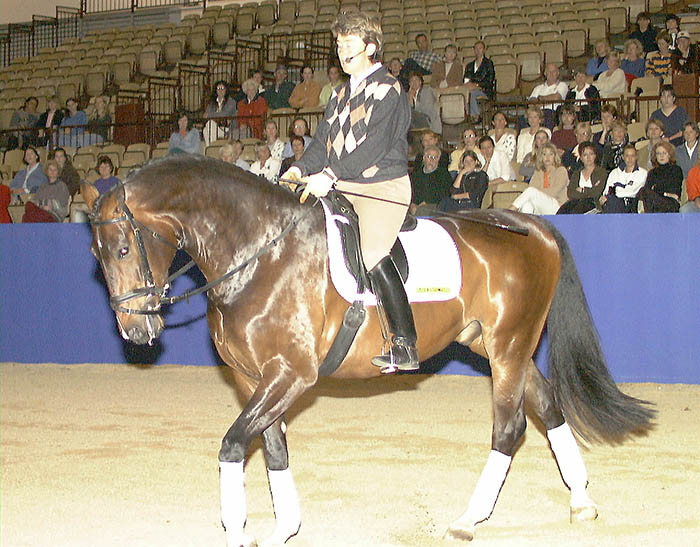
“When I do this little ABC, I make sure I use one aid at a time so the horse can understand, and my main aid is my weight. All training is based on punishment and reward, we have to teach the horse to enjoy the work.”
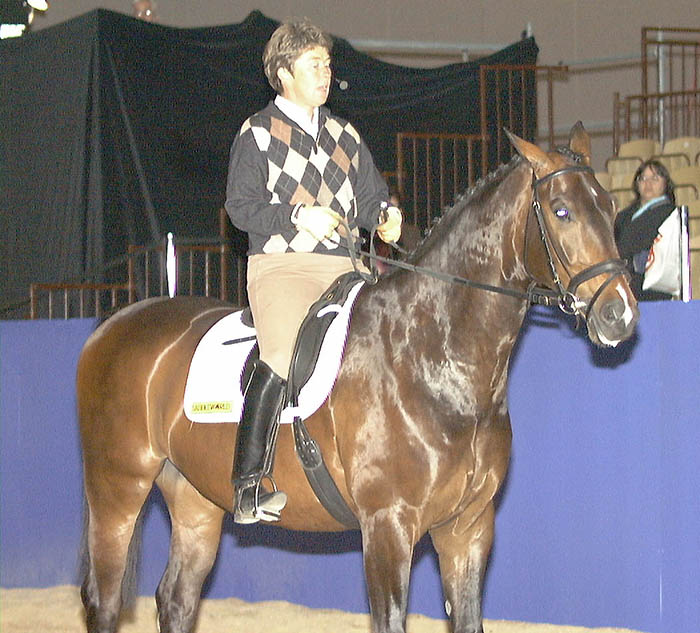
“I stop with the rein, then release with the rein. The horse has to find his own balance. I stop without leg, release, then push him forward.”
“I don’t want him afraid of my leg – just so that he respects my leg. Turn – go – stop, it’s a little sharpen up routine that can even help an older more educated horse. Instead of trying to get his head down, I turn or stop – and that is the beginning of the half halt… it’s hard to tell if a half halt went through, but it’s easy to tell if he turns or stops.”
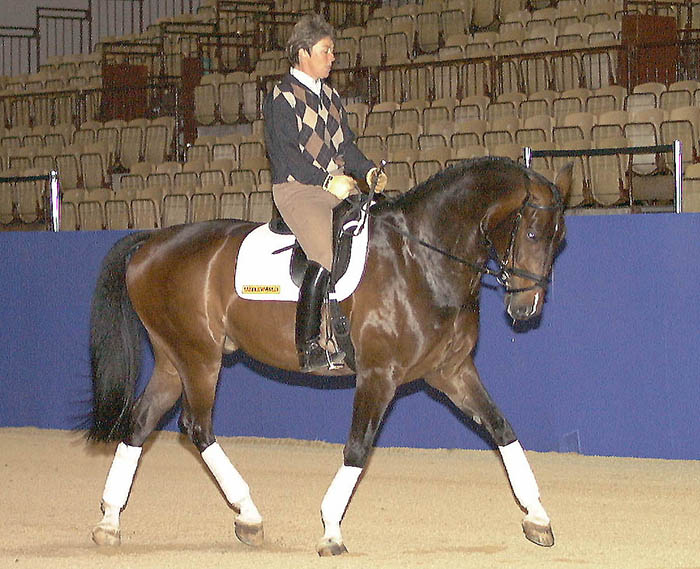
And if the horse canters out of the stop, that’s not a problem: “The main thing is to go forward and don’t punish him for canter when you want trot.”
story continues below the advertisement
Right from the start, Kyra is working at establishing her outside rein, even in these very basic exercises: “Every time he turns, reward him by giving him the inside rein and try to keep the outside rein. Take the rein to the side rather than back, that is a lot softer.”
“You can’t teach the horse to collect at this stage but you can teach him to work into the rein. Give him more rein, and let him stretch his neck down. He mustn’t run away when you give him more rein, but he mustn’t lean on your hands. Teach him to stretch down without changing speed. If he runs away, hold the same pressure in his mouth until he gets softer and releases the rein.”
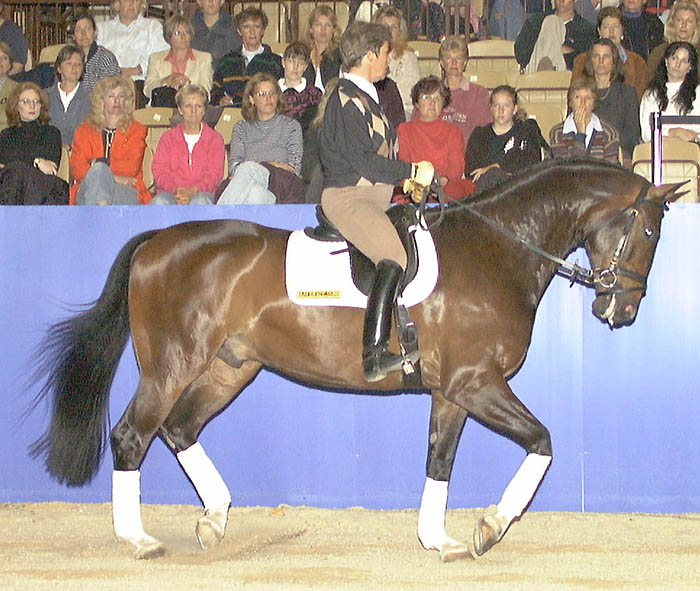
“At every point, try to get the aids lighter and lighter. When you are teaching something you may have to use heavier aids but that doesn’t mean longer spurs or longer curb bits. ‘Use your leg’ doesn’t mean more spur, it often means just stay there. It’s not a matter of the rider changing technique, more the horse changing technique.”
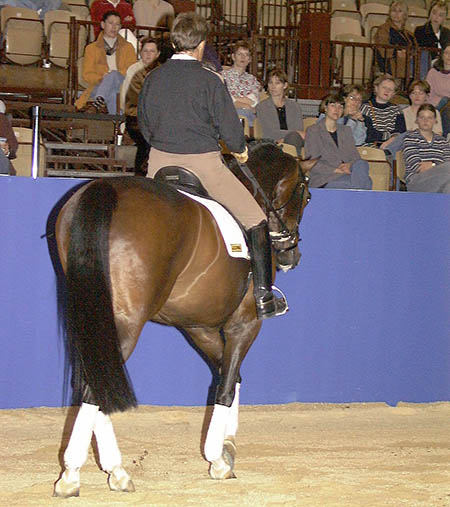
“Try to make it easier for the horse. Put his head to the wall to teach him to go away from your leg. As soon as he moves to the side, take the leg off.”
“Leg yielding is a loosening exercise for the horse – they pull up the leg, fold the joints, push the leg to one side. It is far easier for the horse to leg yield from the centre line to the wall. He wants to go to the wall for help, but never let a young horse go all the way to the wall. The wall is like a magnet, stop him short of the wall.”
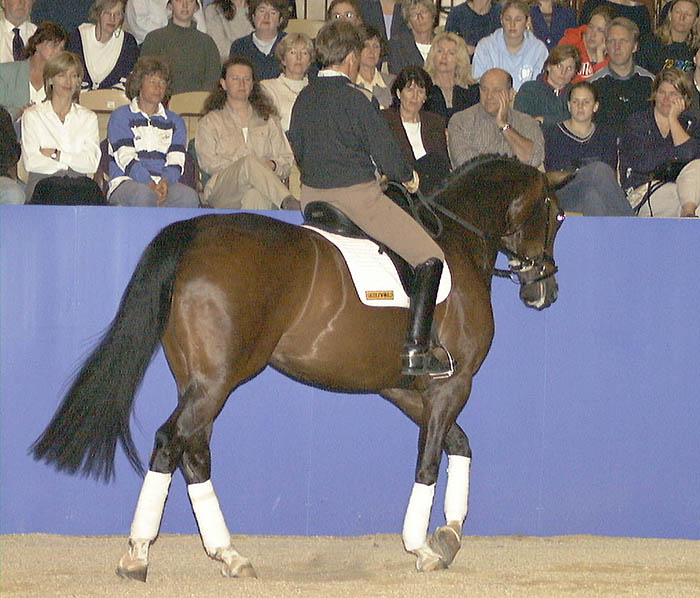
“Leg yielding is NOT rein yielding – the head will come right when the body is right. If he gets too bent, straighten him, even stop trotting, stop and start again in walk, then trot.”
story continues below the advertisement
It was time to move on to the canter, and once again the aids were kept as simple as possible.
“The canter is the most difficult gait for the young horse, they need some speed to maintain their balance, and they cannot collect yet. You must have good timing with the aids to canter, and allow him one or two steps to find the strike off.”
“Too many riders block with the inside rein and the canter becomes short and choppy, the rein is blocking the horse’s inside hind leg. To get the canter strike off, first ride the horse around the school or a fenced area so he gets used to turning through the corner, then as you come into the corner, you can take the outside rein and release the inside, and that frees him up to strike off and he will still turn coming through the corner because of the fence. It doesn’t matter if the horse looks a bit to the outside. We know he has to be flexed to the inside, but that can come later.”
“People talk about whether you should use your inside leg or the outside leg to get the canter strike off. Really some of these cowboy riders could teach the horse to canter by pulling on their ears! For me, what is most important is to use aids that will help when we come to teach flying changes later. I put my inside leg a bit forward, and the outside leg a bit back to push the quarters in.”
“The Russian horses canter only on the outside leg – I don’t like that because when you put the outside leg on for the half pass in trot, then they often canter. I prefer to make the transition more on the inside leg.”
“For the transition back to trot, just check with the outside rein, and the horse goes forward into trot, he is not checked into trot, just resist a little with the outside rein and keep him going forward.”
“Transitions are to get the horse relaxed and on the aids, to sensitize the aids, but if the young horse is not really prepared for the transition, wait a couple of steps to get a good transition.”
“Every time you do a transition, give yourself a mark for the transition.” And of course, as young Day Star struck off very nicely into canter, Kyra awarded herself an 8.

Receive a 10% discount when you purchase any Bates Saddle Pad before 24 December 2022.
Kyra then moved on to another exciting young horse, Mary Hanna and Ken Marks’ five-year-old stallion, Rituel (who is by the Belgian sire, Weltmeyer 11, a son of Weltmeyer), and with the new horse, Kyra moved on to another of the crucial concepts in effective riding – in front of the leg.
“In front of the leg is a bit hard to explain. It’s a bit like God – everyone has heard of him, but no one has seen him. It is hard to explain the feeling of ‘in front of the leg’ but when it happens, it’s like magic. It is a bit like explaining how strawberry jam tastes – it is easier if you have eaten it before or even tasted a strawberry. It is the same with the good feelings you get when you are riding: think about that feeling, give it a name, then it will be easier to get it back.”
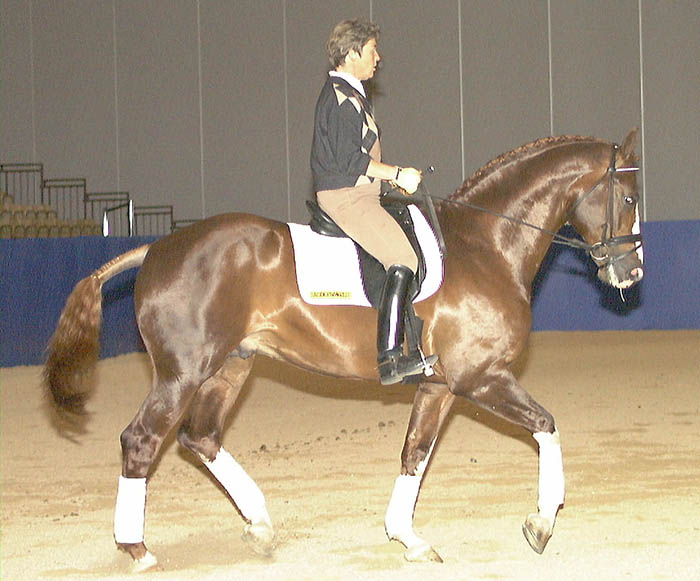
“Even when you are riding, think of yourself as if you are lunging. As the rider, you are like the girth, around the horse, but not too tight. Your reins are like side reins, not short and choppy, or long and sloppy.”
Once again, Kyra was into her little stop start routine.
“If I am not sure about how the horse is going to react, I always take the rein. Don’t try to saw the horse down into position, just turn him and take your hand away from his neck to the inside to turn him. Often you see the rider taking the inside rein over the neck, and then the rider falls to the outside – you can get the horse to turn correctly when you are in this position.”
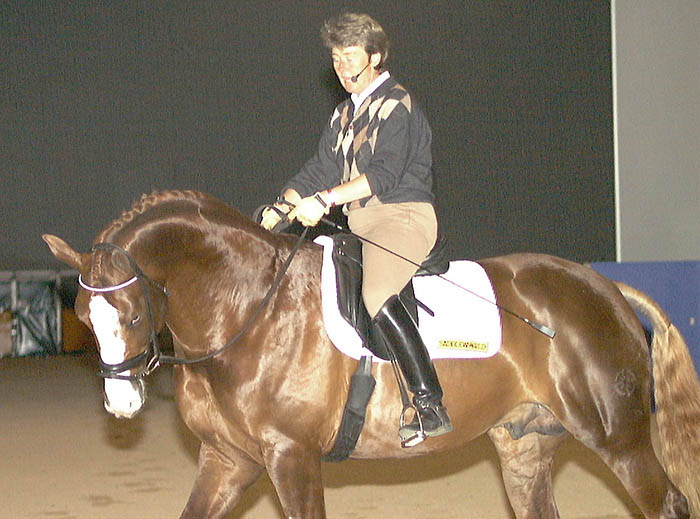
“Learn to turn from the cowboys – they turn quickly and with the front legs – but remember, don’t use too much inside rein.”
Horse tuned and ready, it was time to return to the topic of ‘in front of the leg’.
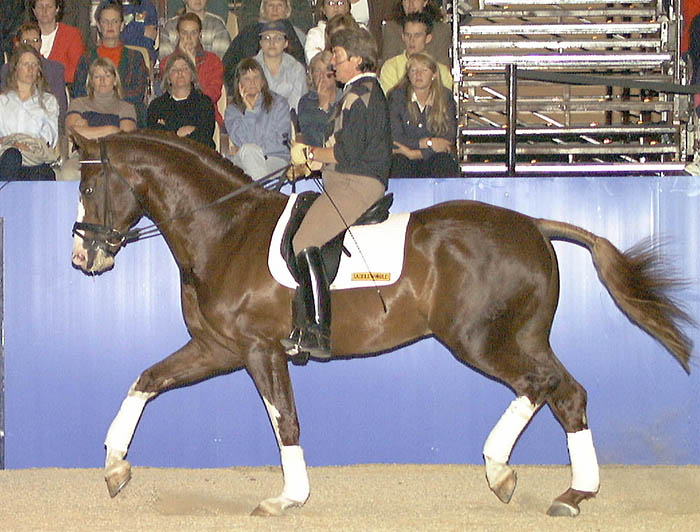
“When he is in front of my leg, I don’t have to use my leg, I can make it totally floppy. If I have to push push push with tense muscles then I can’t feel what’s happening under me. Good riders don’t push down in the saddle, they balance themselves on their seat bones rather than pushing down.”
“Keep it light and keep going forward – if I have to use my hand all the time, then I am pushing all the time. go forward and get rid of the hand…”
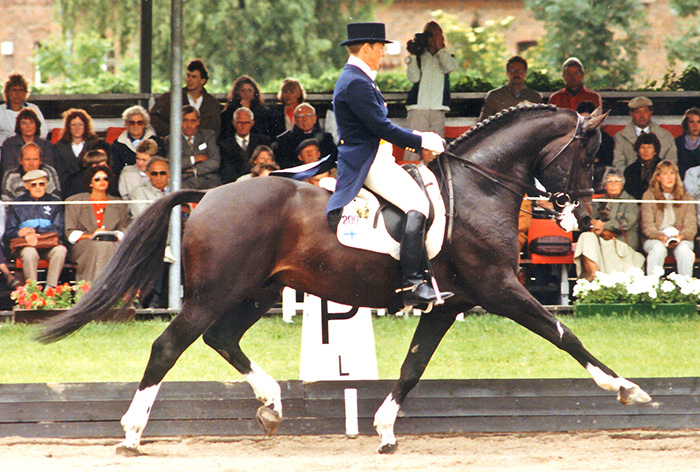
Breeding your own champion this year? Go to www.ihb.com.au and choose from the amazing selection of stallions
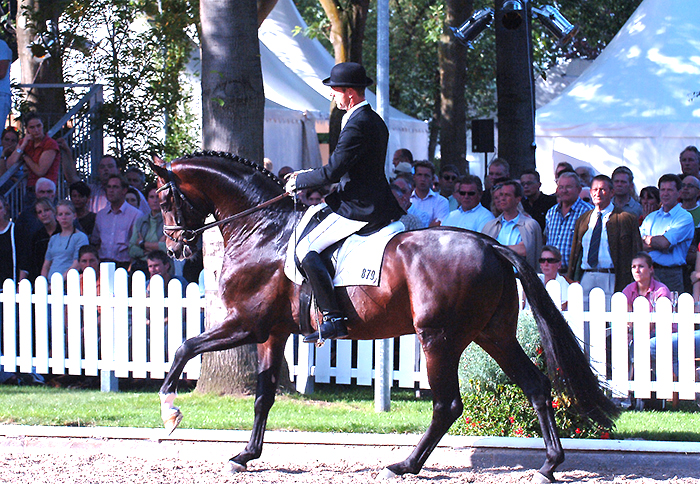
Sir Donnerhall
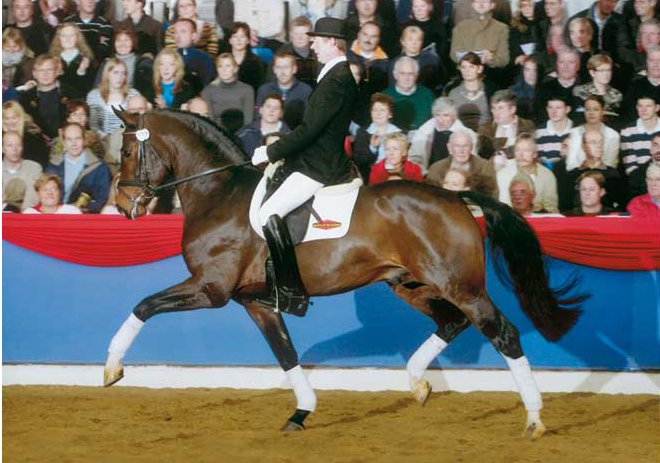
Fidertanz

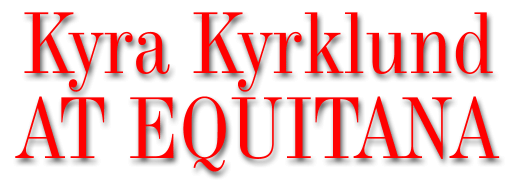
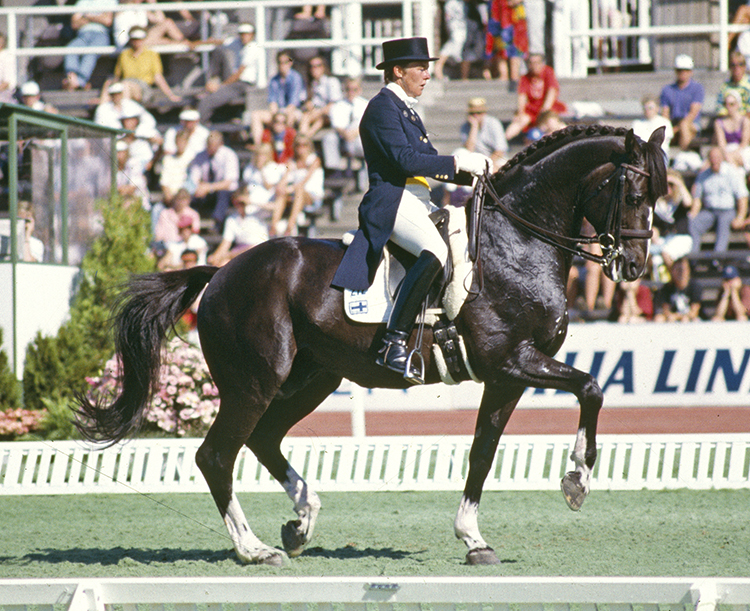
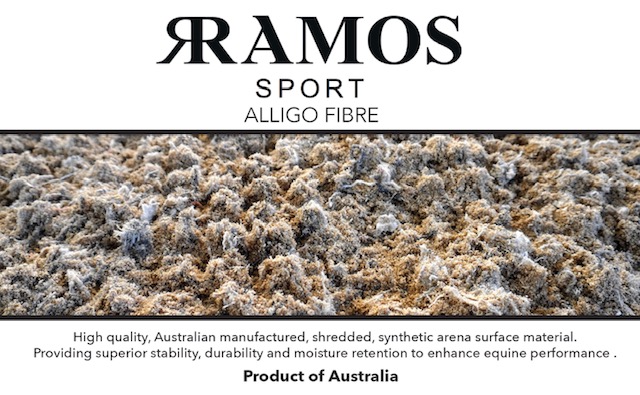
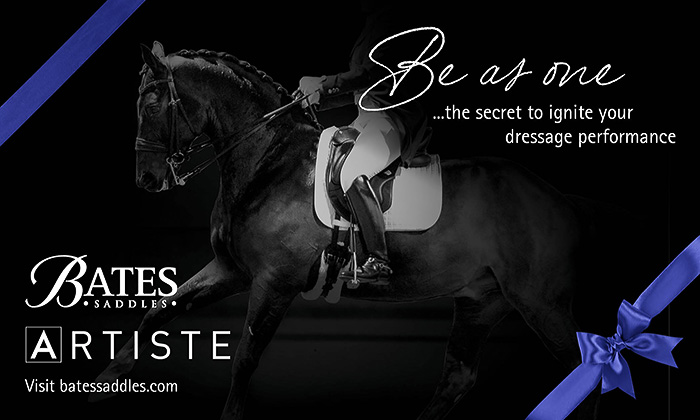
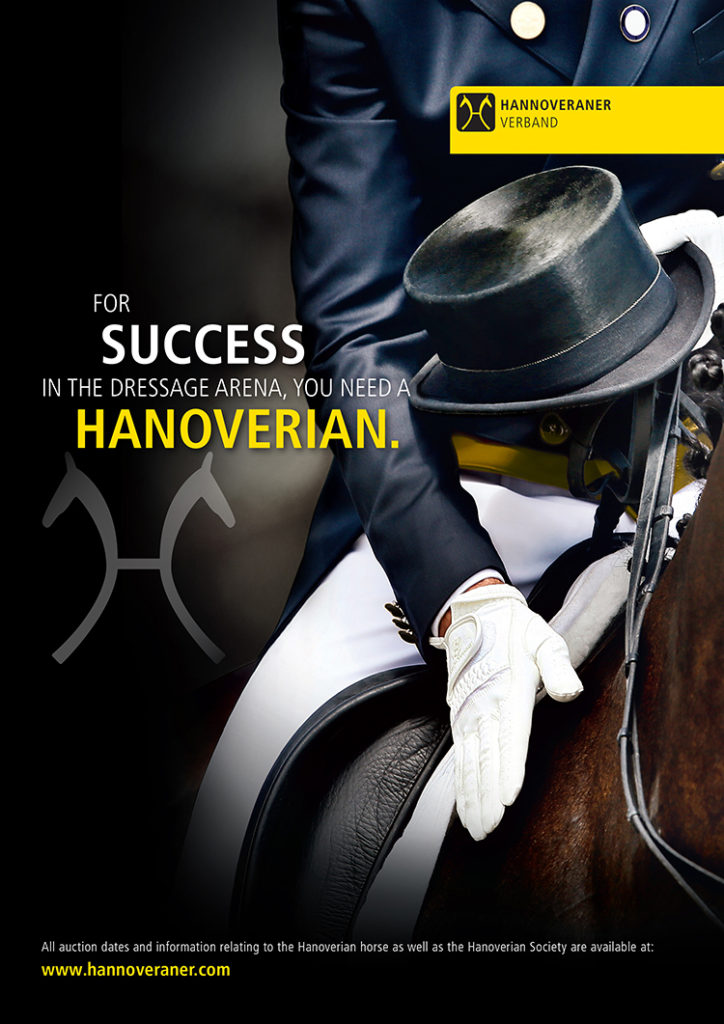
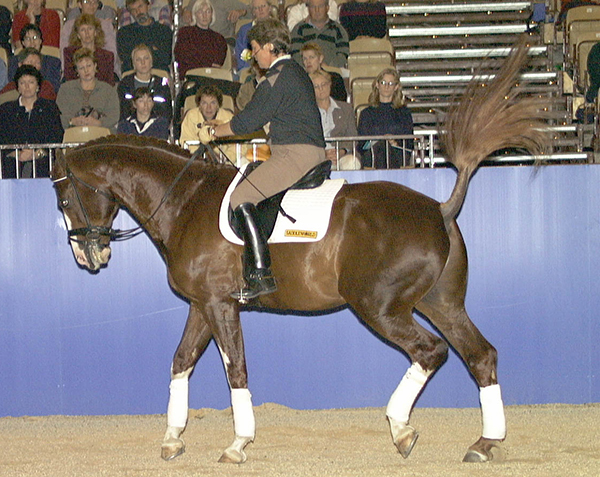
Fantastic article. Thank you